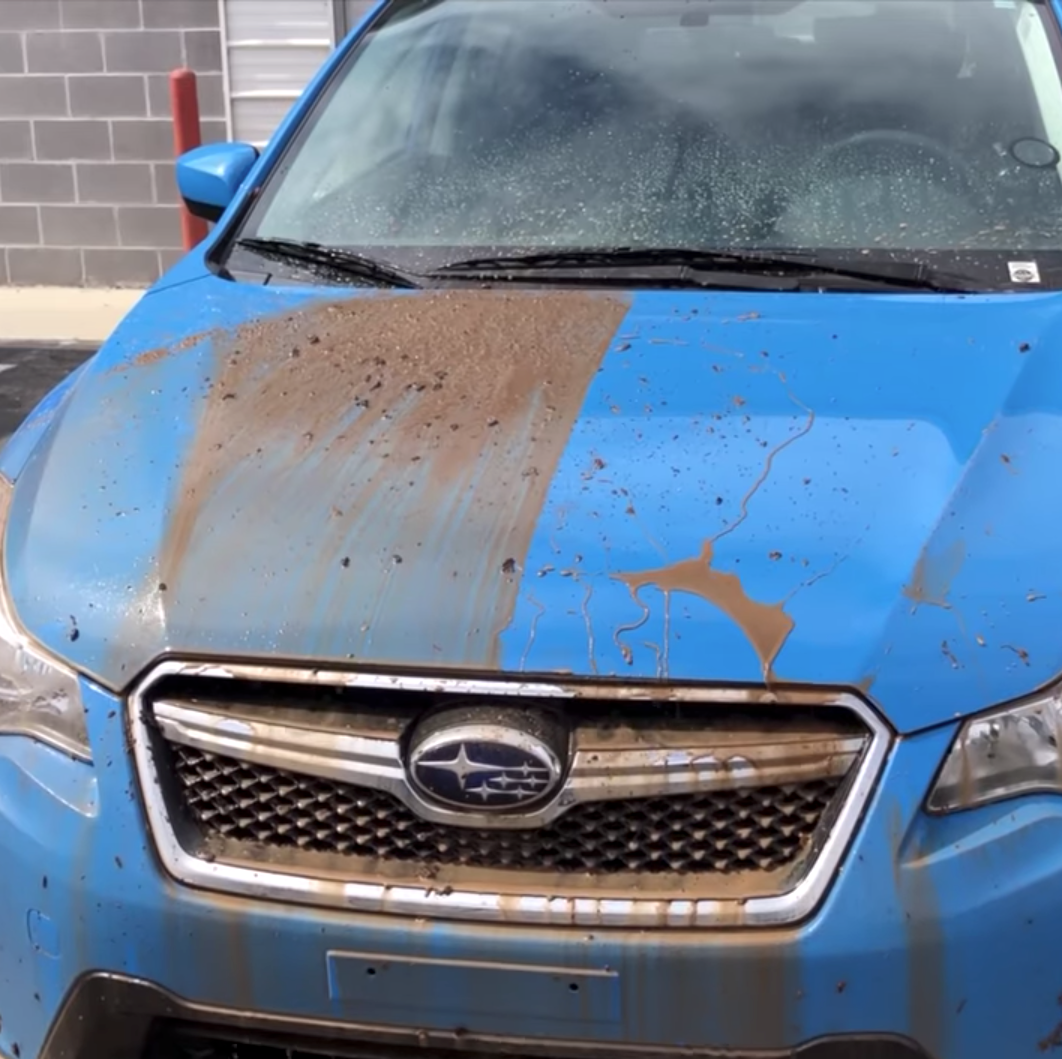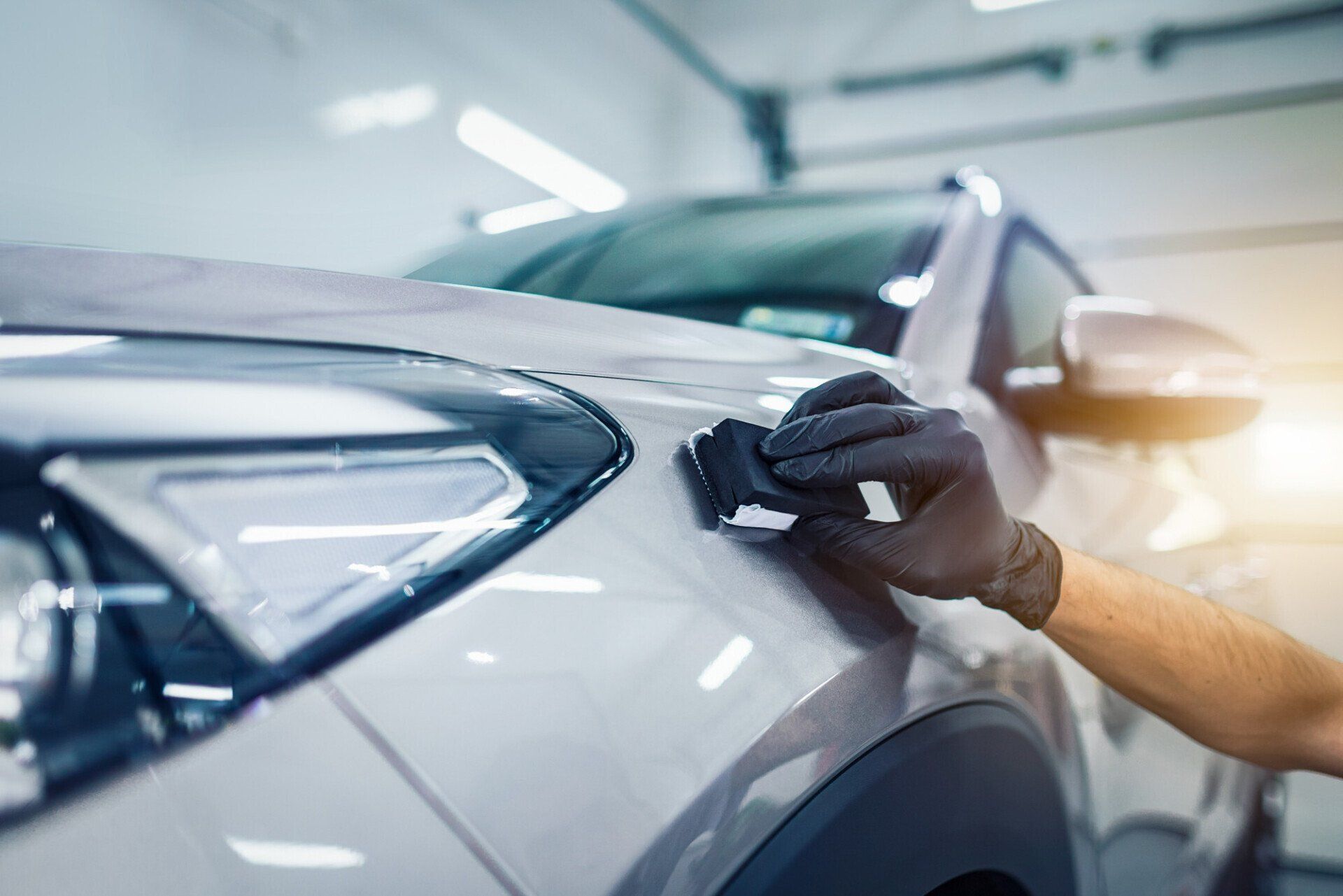Why pairing detailing services with Ceramic Coating Newark offers better results
Exploring the Scientific Research Behind Car Ceramic Coating and Its Safety Residences
The scientific research of car ceramic coating offers a remarkable research in advanced auto protection. Made up mostly of silicon dioxide and polymers, these layers create a robust bond with automobile paint. This communication enhances durability against environmental dangers while using hydrophobic advantages. The complexities of how these layers work and their lasting advantages continue to be less recognized. Ceramic Coating Newark. Unloading these details discloses why ceramic layers are ending up being a recommended option for car treatment
What Is Ceramic Coating?
Ceramic coating is a fluid polymer that chemically bonds to the surface area of a car's paint. This sophisticated safety layer boosts resilience and offers exceptional resistance to environmental elements. Unlike typical wax or sealers, which offer momentary protection, ceramic coatings produce a long-lasting guard that can endure severe problems such as UV rays, acidic pollutants, and extreme climate. When used appropriately, the coating forms a hydrophobic surface area, triggering water to grain and slide off, which assists in maintaining the automobile's cleanliness. Furthermore, it supplies enhanced gloss and depth to the paint, making the car appear even more refined and dynamic. The application process typically involves complete surface prep work, consisting of cleansing and sprucing up, to guarantee peak bonding. As an outcome, ceramic finishings are becoming significantly preferred amongst car enthusiasts and those looking for to safeguard their financial investments, promising to maintain the lorry's aesthetic allure while reducing the regularity of maintenance.
The Make-up of Ceramic Coatings
The elaborate formula of ceramic layers mostly contains silicon dioxide (SiO2), which is acquired from natural resources like quartz and sand. This essential component provides the foundation for the coating's sturdiness and protective high qualities. In addition to SiO2, ceramic finishings commonly include different polymers and additives that improve attachment, flexibility, and resistance to environmental aspects. These substances function synergistically to create a robust barrier versus contaminants such as dirt, chemicals, and UV rays.Furthermore, some formulations integrate titanium dioxide (TiO2) or various other nanomaterials, which can increase the coating's hydrophobic buildings, leading to enhanced water repellency. The specific make-up can vary significantly amongst manufacturers, affecting performance and long life. Inevitably, the combination of these aspects finishes in a protective layer that not only improves the visual allure of vehicles however also serves to extend their life expectancy by protecting the surface from prospective damages.
Exactly How Ceramic Coatings Job
Understanding how ceramic layers function entails exploring their chemical make-up, which adds to their protective high qualities. The application procedure is necessary for achieving perfect outcomes, while longevity and longevity elements establish the coating's efficiency over time. With each other, these aspects highlight the benefits and efficiency of ceramic coatings for automobile defense.
Chemical Structure Explained
While several car owners look for lasting defense for their lorries, the chemical structure of ceramic coatings plays a vital role in their performance. These finishings largely contain silicon dioxide (SiO2), which is acquired from all-natural minerals. This substance develops a solid bond with the vehicle's paint, producing a long lasting, protective layer. In addition, lots of ceramic finishes include titanium dioxide (TiO2), improving their hydrophobic residential or commercial properties and resistance to UV rays. The presence of polysiloxanes can further enhance adaptability and resilience. Together, these components add to the coating's capability to push back water, dirt, and impurities, while likewise giving a high-gloss finish. Comprehending this chemical structure helps car proprietors value the robust security supplied by ceramic finishings.
Application Refine Review
Applying ceramic coatings involves a thorough procedure that ensures perfect bonding and protection for the car's surface. Extensive cleansing and decontamination of the car's exterior are carried out to remove dust, crud, and previous waxes. This action validates that the surface area is devoid of impurities that can prevent adhesion. Following this, the paint is commonly brightened to boost clearness and eliminate any flaws. As soon as prepared, the ceramic coating is used in small areas making use of an applicator pad, permitting for uniform protection. The coating is then left to treat, developing a solid chemical bond with the surface. Correct curing times and conditions are important, as they verify the coating achieves its maximum performance and protective high qualities.
Longevity and Resilience Elements
Ceramic finishes are made to provide durable security with their advanced chemical make-up, which produces a durable obstacle versus environmental pollutants. The resilience of these coverings is influenced by variables such as the density of the application, the high quality of the product, and the conditions under which the automobile is exposed. High-quality ceramic finishings can last numerous years, withstanding scratches, UV rays, and chemical stains. Correct upkeep, consisting of routine cleaning and periodic reapplication, can even more improve durability. In addition, ecological variables like environment and direct exposure to toxins can influence the life-span of the coating. In general, when applied and preserved appropriately, ceramic finishes provide phenomenal resilience, making them a popular option for car lovers looking for to protect their automobile's look.
Hydrophobic Qualities and Water Repellency
Hydrophobic homes are a hallmark of high quality car ceramic finishings, substantially boosting the automobile's surface area efficiency. These coverings develop a molecular bond with the car's paint, resulting in a surface this website that pushes back water successfully. When water comes into call with a ceramic-coated surface area, it grains up and rolls off, lessening the quantity of fluid that stays on the paint. This behavior not only adds to an aesthetically pleasing look but also minimizes the build-up of impurities such as dirt, grime, and roadway salts.The boosted water repellency causes much easier cleansing and maintenance, as much less effort is needed to remove unwanted substances. On top of that, the hydrophobic nature of ceramic finishings assists in stopping water places, which can mar the surface of uncoated surface areas. In general, the unification of hydrophobic properties in ceramic finishings plays an important duty in keeping the car's beautiful look while streamlining upkeep.
Security Versus Scratches and UV Damage
Car ceramic finishes offer substantial security versus scratches and UV damages. The scrape resistance device creates a resilient layer that soaks up influences, while the UV protecting advantages aid maintain the lorry's paint honesty with time. With each other, these attributes add to a longer-lasting and aesthetically enticing finish.
Scratch Resistance Mechanism
Utilizing advanced technology, ceramic layers supply a durable shield against scratches and UV damages, boosting the durability and appearance of automobile surface areas. The scratch resistance device of these layers is credited to their special molecular structure, which creates a sturdy bond with the lorry's paint. This bond produces a hard, safety layer that can absorb influences and resist abrasions. Additionally, the smooth surface area of the coating minimizes rubbing, see post making it challenging for pollutants to adhere and trigger scratches. The chemical make-up of ceramic layers commonly includes nanoparticles that strengthen the safety layer, additional enhancing its strength. Subsequently, cars treated with ceramic coatings show significantly enhanced scrape resistance contrasted to standard wax or sealers, ensuring an immaculate finish in time.
UV Shielding Benefits
The protective qualities of ceramic layers expand past scratch resistance to include significant UV securing advantages. These coatings produce a durable barrier that shows harmful ultraviolet rays, safeguarding the vehicle's paint and underlying materials. Prolonged exposure to UV radiation can lead to fading, oxidation, and damage of the paint finish. By incorporating ceramic layers, vehicle owners can successfully alleviate these dangers, preserving the visual charm and honesty of their automobiles. In addition, the UV obstructing buildings add to improved long life, decreasing the regularity of repainting and maintenance. Inevitably, the combination of ceramic coatings offers a detailed option for shielding cars from the destructive impacts of sunlight direct exposure, ensuring a sustained, vibrant appearance gradually.
The Long life and Upkeep of Ceramic Coatings

Frequently Asked Concerns
Can Ceramic Coating Be Applied to Any Type Of Sort Of Lorry?
Ceramic coating can be related to different kinds of automobiles, consisting of cars and trucks, trucks, and motorcycles. However, surface preparation and compatibility with certain products are vital for excellent bond and performance of the coating.
Just How Much Does Ceramic Coating Generally Cost?
Ceramic coating usually costs in between $500 and $2,000, depending on elements such as automobile size, coating quality, and professional application. The investment can supply lasting defense and enhance the car's appearance in time.

Is Professional Application Required for Best Outcomes?
The necessity of professional application usually depends on desired outcomes. Professionals normally ensure appropriate surface area prep work and application strategies, bring about ideal bonding and durability of the coating, which may be testing for inexperienced people to achieve.
Can Ceramic Coatings Be Removed or Fixed?
Ceramic layers can be eliminated or fixed, though the procedure might need details solvents or strategies - Ceramic Coating Newark. Appropriate removal is important to prevent damage to the underlying surface area, stressing the value of professional support for excellent results
How Does Ceramic Coating Compare to Conventional Wax?
The contrast between ceramic coating and typical wax discloses that address ceramic finishings use premium durability, improved protection versus environmental pollutants, and longer-lasting sparkle, while wax calls for extra frequent application and offers much less total resistance to damages.